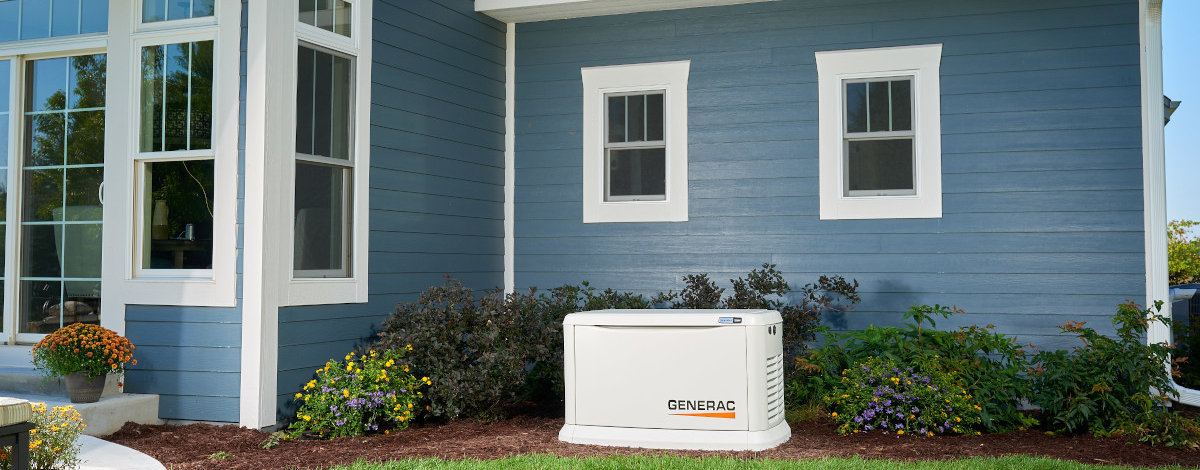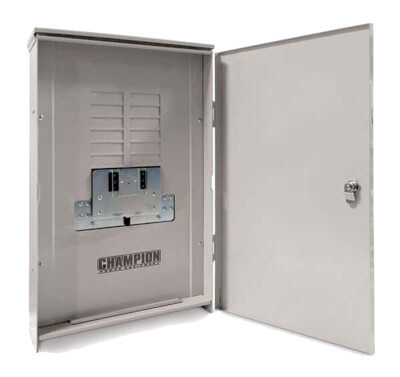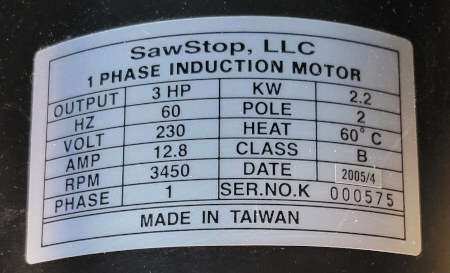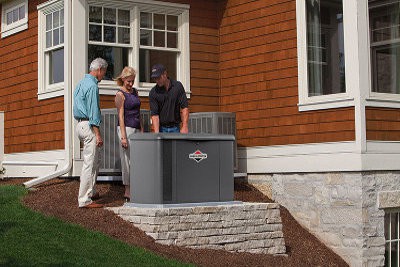Standby Generator Sizing

What Size Generator Do I Need for My House
Determining the correct size standby generator depends on multiple factors, but the most important consideration is the circuits that receive power during an outage. You could:
- Power the entire house with a whole house generator
- Power the entire house with a whole house generator that manages the power to heavy loads.
- Power only the circuits you deem critical or essential, plus one or two conveniences.
Powering Your Whole House
A whole house generator can power you entire house. That could be expensive depending the power requirements. A home with all electric appliances (water heater, range, air conditioners, furnaces, dryer, etc) could use so much power it would overload even the highest capacity air cooled standby generator. However, if the generator system manages the power to heavy loads, the home doesn't need a generator capable of powering everything at once.
Power management starts with assigning priorities to the heavy loads in a home. A well pump might be first priority, then the central air conditioner, water heater, electric range, and finally the electric dryer. If one appliance is running, and adding a second appliance with a higher priority would overload the generator, the lower priority load is shed to allow the higher priority load to start. If both loads can run without overloading the generator, then power management allows them to run together.
When power use is high, a load shedding generator system might never allow the lowest priority loads to run. In that case, if you need to dry clothes for work, you could always turn off the air conditioner for an hour.
A whole house generator system works by controlling the source of power to your home. An automatic transfer switch installed between the electric meter and main circuit breaker panel selects the power source—the electric utility during normal operation, and the generator during a power outage.
Powering Your Critical and Essential Circuits

Powering only what you need may reduce the generator capacity your home requires. That turns into lower initial generator cost and lower operating (fuel) costs. Using less fuel saves money. When the generator runs on propane, it also means longer run times between fill ups. The right generator paired with the right size tank could run two weeks or longer before the fuel runs out.
In it's simplest form, an automatic transfer switch includes a limited number of circuits. The homeowner decides before installation which circuits the generator will power during an outage. The installer moves the required circuits from the main circuit breaker panel into the transfer switch. A single large breaker in the main circuit breaker panel provides power to the transfer switch during normal operation, which distributes the power to the circuit breakers in the transfer switch. During an outage, the transfer switch disconnects power from the main breaker panel and connects power from the generator.
Circuit selection and generator size is important. Choose too many high current appliances and the generator will overload. Your electric range and dryer might not have power at all, but your furnace and air conditioner run as needed, along with your well pump, if you have one. The fridge and freezer stay cold, you've got lights, internet, and television, and can run a couple of small kitchen appliances. If necessary, you could always run an extension cord. Just be aware that adding too much could overload the generator.
Calculate Your Power Requirements
Whether you choose a whole house generator that manages power or a system to keep your critical and essential circuits operating during an outage, the basic method of determining power requirements remains the same.

Terms to Know:
- Running Watts: The amount of power required to run.
- Starting Watts: The amount of power required to start.
- Calculate Watts: Volts x Amps
- Estimate Starting Watts: Watts x 3
Anything with a motor requires up to 3 times the amount of power to start as it does to run. Starting watts refers to the amount of power to start. The power needed to run is running watts, or just watts. A 100-Watt incandescent light bulb needs 100 watts to run. However, a 1/3 horsepower sump pump needs 1500 Watts to start, then uses just 500 watts to run.
Make a list of all your circuits and note which ones have motors. Refrigerators, air conditioners, pumps, freezers, etc. To estimate, use Norwall's Power Calculator for common appliances. It's a good idea to check appliance tags for more exact values. They usually provide volts and amps. See the electric motor tag for an example on how to calculate watts and starting watts for an electric motor.
Note: Just because a manual indicates that an appliance must plug into a 20-Amp outlet or a circuit with a 20-Amp circuit breaker (or other size) does not mean it draws 20 Amps. Check the appliance tag or use our power calculator for an estimate.
Add up the total running watts for everything you want to power. Add 25% to prevent overloads or running at maximum load for minimum capacity. Then pick the appliance with the largest starting watts and add that to the running watts.
The standby generator you need has the minimum capacity AND the starting watts capacity. If necessary, move up to a larger capacity generator to cover the starting watts needed.
Considerations for Choosing a Standby Generator

A sizing guide like this one can't anticipate all your needs or power use habits. The basic calculations shown above will help you determine what you probably need. Ideally, you would work with a generator installer who will do a load calculation, then factor in your power use to determine how to manage the power to your home.
Here's some more tips and considerations.
Remember that the main breaker in your circuit breaker panel or your external disconnect breaker are sized to protect your equipment and do not represent how much power you need. A home with a 200-Amp main circuit breaker probably needs no more than 80-90 amps of current at 240 volts (the generator supplies 240 volts to your transfer switch.)
An air-cooled 22kW generator capable of supplying 86 amperes of power while running on natural gas will run a pair of three-ton air conditioners for a total of about 38 amps of current if both run at once, leaving you another 48 amps for the rest of the house. That is enough to power a refrigerator, freezer, sump pump, half a dozen incandescent lights, and your television with power to spare. You can still surf the internet on your computer, charge your cell phones and other electronics, and keep the alarm system powered, and much more.
The Norwall Power Calculator provides estimates based on average appliances. It's always a good idea to check your appliance tags and consult with your installer.
Tip: If you have two A/C units of the same size, check the requirements of one first, then double the power required and add it to the total.
Tip: Don’t buy just enough or too much. The right generator has enough power to handle the things you want it to power with some margin, but isn’t so large that it uses more fuel than necessary. Determine what it should power during an outage, then add about 25 percent to the total kilowatts and buy a generator in that range.
Air-Cooled Home Standby Generators
Propane or Natural Gas Air-cooled Generators can power everything or just the essentials. Manufacturers often bundle 8 to 12 kilowatt models with an automatic transfer switch load center. These have room for a limited number of circuits and don’t include any power management features. When the power goes out, only the circuits connected to the load center will have electrical power from the standby generator.
Models with 12 to 22 kilowatts of power can provide more power for more appliances. Look for whole house automatic transfer switches that control power to the entire home. They include sophisticated power management capabilities that allow you to power multiple 240-volt appliances such as central air conditioners.
Liquid-Cooled Home Standby Generators
As homes get larger and use more power, the standby generator capacity required also increases. An air cooled generator may struggle to power a home with 300 or 400 ampere service. Liquid-cooled Generators can supply even the largest luxury homes. The basic principles remain the same however. Add up all the power requirements and choose a generator that can supply at least 25 percent more power.
Updated 8-15-2025
MJ Logan
